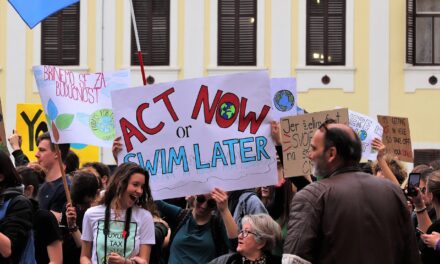Proposed Solutions and Interstate and International Cooperation explained
Proposed Solutions and Interstate and International Cooperation
The Great Salt Lake: A Shrinking Lifeline Facing a Crisis
The Great Salt Lake, a vital ecosystem and economic resource, is shrinking at an alarming rate. This decline has dire consequences for the environment, wildlife, and human communities.
A Sea of Challenges: The Impacts of Shrinking
- Wildlife Habitat Loss: The lake provides critical habitat for millions of migratory birds, fish, and other wildlife. As the lake shrinks, these animals lose essential food sources, breeding grounds, and shelter, putting their survival at risk.
- Air Quality Degradation: The lake’s shrinking surface area exposes the dry lakebed, a source of fine dust particles that are easily blown into the air. This dust, containing harmful pollutants, can contribute to respiratory problems and other health issues.
- Economic Impacts: The Great Salt Lake supports a thriving tourism industry, recreation activities, and brine shrimp harvesting, a crucial part of the regional economy. The shrinking lake threatens these industries and the livelihoods they support.
Finding Solutions: A Call to Action
Addressing the Great Salt Lake’s crisis requires a multi-faceted approach involving water conservation, policy changes, and community engagement.
Water Conservation:
- Individual Actions: Every person can make a difference by conserving water at home through simple actions like taking shorter showers, fixing leaks, and watering lawns efficiently.
- Water-Efficient Technologies: Investing in water-saving appliances, such as low-flow showerheads and toilets, can significantly reduce water consumption.
- Smart Irrigation: Using irrigation systems that optimize water use based on weather and soil conditions can help conserve water for both residential and agricultural purposes.
Policy Changes:
- Water Diversions: Addressing water diversions that pull water away from the lake is crucial. This includes reassessing existing water rights and promoting water conservation measures in agricultural areas.
- Sustainable Water Management: Implementing policies that prioritize water conservation, promote sustainable water use practices, and encourage water reuse initiatives are essential to ensuring a healthy Great Salt Lake.
The Power of Cooperation:
The Great Salt Lake is a shared resource, and addressing its crisis requires cooperation between local communities, state and federal governments, agricultural interests, and businesses.
By taking action, we can help protect the Great Salt Lake, ensuring its health and its vital role in the ecosystem for generations to come.
The Great Salt Lake: A Sea of Challenges
TL;DR: The Great Salt Lake is shrinking, and it’s a big problem! Climate change is making things worse, but there are ways to help. We can conserve water, use smarter irrigation, and work together to keep the lake healthy.
A Lake in Trouble
The Great Salt Lake is a giant, salty body of water in Utah. It’s an important part of the state’s ecosystem, providing a home for birds, fish, and other wildlife. It also plays a role in the climate of the region, helping to keep the air clean and cool.
But the Great Salt Lake is shrinking. Over the past few decades, the lake has lost a lot of water, and it’s continuing to shrink. This is a serious problem, because it’s affecting the health of the lake and the people who live nearby.
Why is the Lake Shrinking?
There are several reasons for the shrinking of the Great Salt Lake.
- Climate Change: Climate change is making the region hotter and drier, causing less snow to fall in the mountains. The snowmelt from these mountains is the main source of water for the lake.
- Increased Water Use: The population of the Salt Lake City area has grown rapidly, leading to an increased demand for water. This means more water is being used for things like homes, businesses, and farms.
- Water Diversions: Over the years, people have built dams and canals to divert water away from the Great Salt Lake for other uses, like irrigation.
The Impact of a Shrinking Lake
A shrinking Great Salt Lake has many negative effects:
- Wildlife Habitat Loss: Many animals, like birds and fish, depend on the lake for survival. As the lake shrinks, their habitats disappear, putting them at risk.
- Air Quality Problems: The Great Salt Lake acts like a giant filter, trapping dust and pollution. When the lake shrinks, it can’t filter the air as well, leading to worse air quality.
- Economic Impacts: The lake brings in tourists and supports important industries like fishing and recreation. As the lake shrinks, these industries are hurt, impacting the local economy.
Finding Solutions
There are many ways we can help save the Great Salt Lake:
Water Conservation
- Use Less Water: We can all do our part by using less water at home, like taking shorter showers and watering our lawns less often.
- Fix Leaks: Check for leaks in our homes and have them fixed right away. Every drop counts!
Innovative Irrigation
- Smart Irrigation Systems: Farmers can use smart irrigation systems that use less water and apply it more efficiently.
Policy Measures
- Water Conservation Laws: Governments can make laws that encourage people to use less water.
- Protecting Wetlands: We need to protect the wetlands around the Great Salt Lake, which help filter water and provide habitats for wildlife.
The Power of Cooperation
The Great Salt Lake is a shared resource, so solving the water shortage crisis requires cooperation between different groups.
- Interstate Cooperation: States that share the water flowing into the Great Salt Lake need to work together to manage water resources.
- International Cooperation: Global cooperation is also important because climate change is a global problem.
Active Climate Rescue Initiative
The Active Climate Rescue Initiative (https://climate-rescue.org/) is a non-profit organization that is working to address the Great Salt Lake’s water shortages. They are developing innovative solutions, like new irrigation systems and water conservation programs, to help save the lake.
Summary: The Great Salt Lake is facing a water crisis, caused by climate change, increased water use, and water diversions. This shrinking lake threatens wildlife habitats, air quality, and the local economy. By conserving water, using innovative irrigation techniques, and working together through interstate and international cooperation, we can help save the Great Salt Lake. Organizations like the Active Climate Rescue Initiative are working to develop solutions to this problem.
More on Proposed Solutions…
- ## SEO Keywords related to “Proposed Solutions” & “Interstate and International Cooperation”:
- Proposed Solutions:
- Proposed solutions for global challenges
- Innovative solutions to international problems
- Sustainable solutions for international development
- Effective solutions for interstate conflicts
- Collaborative solutions for global issues
- Policy solutions for international cooperation
- Best practices for international problem solving
- Strategic solutions for international relations
- Technological solutions for global challenges
- Research and development for international cooperation
- Case studies of successful international solutions
- Solutions to international trade disputes
- Solutions to climate change in international cooperation
- Solutions to global poverty and inequality
- Solutions to global health crises
- Solutions to international migration and displacement
- Solutions to cybersecurity threats in international cooperation
- Solutions to global energy challenges
- Solutions to international environmental problems
- Solutions to international terrorism
- Interstate and International Cooperation:
- International cooperation
- Interstate cooperation
- Cross-border collaboration
- Global partnership
- International diplomacy
- Multilateralism
- Global governance
- Intergovernmental organizations
- International law
- International treaties
- International agreements
- International development cooperation
- International trade cooperation
- Environmental cooperation
- Security cooperation
- Health cooperation
- Educational cooperation
- Cultural cooperation
- Scientific cooperation
- Technological cooperation
- Sustainable development goals (SDGs)
- United Nations (UN)
- World Trade Organization (WTO)
- International Monetary Fund (IMF)
- World Bank
- European Union (EU)
- African Union (AU)
- ASEAN (Association of Southeast Asian Nations)
- BRICS (Brazil, Russia, India, China, South Africa)
- G7 (Group of Seven)
- G20 (Group of Twenty)
- International organizations
- Non-governmental organizations (NGOs)
- Civil society organizations
- International relations
- Global politics
- Foreign policy
- International security
- International law
- International development
- International economics
- Global issues
- International challenges
- Cooperation for peace
- Cooperation for development
- Cooperation for sustainability
- Building bridges
- Fostering dialogue
- Strengthening relationships
- Shared responsibility
- Collective action
- Global citizens
- International community
- Global solidarity











